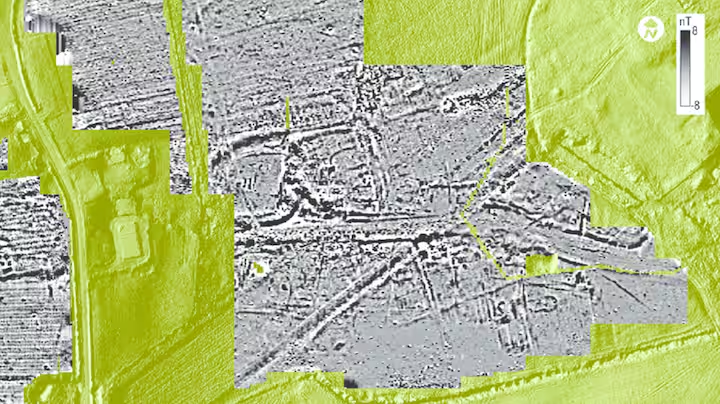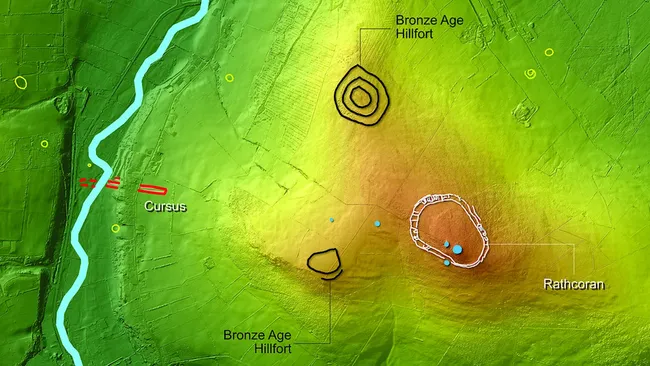In a remarkable archaeological revelation, recent excavations in Baltinglass, County Wicklow, Ireland, led by Dr. James O'Driscoll of the University of Aberdeen, have brought to light what are believed to be ancient pathways for the deceased.
Employing cutting-edge Light Detection and Ranging (LiDAR) technology, which utilizes lasers to meticulously map terrain and uncover concealed structures, researchers have uncovered five monumental structures dating back to the middle Neolithic era, spanning from 8000 BCE to 2000 BCE.
The unearthed constructions, referred to as cursus monuments, comprise earthworks consisting of elongated trenches or ditches that traverse the landscape. Ranging in size from 122 to over 183 meters in length, with the most extensive stretching to 400 meters, these monuments are thought to have served as ceremonial avenues for mourning rituals or the journey of the departed into the afterlife.
Lidar imaging of one of the five curus monuments (seen in red) found at the prehistoric site in Ireland. (Image credit: James O'Driscoll; Antiquity Publications Ltd)
Dr. O'Driscoll postulates that the alignment of these sites with the morning sun during the summer solstice, coupled with their proximity to other ancient burial grounds, lends credence to the theory of their ceremonial significance.
The pivotal role of LiDAR technology cannot be overstated in this groundbreaking discovery. By deploying airborne laser pulses to survey the terrain, researchers were able to discern structures characteristic of cursus monuments. Notably, an Irish aerial survey company conducted a LiDAR scan of the area in 2022, revealing not only the cursus monuments but also previously unknown features such as a Bronze Age hillfort and medieval ringforts.
The significance of these findings extends beyond mere archaeological curiosity. The cluster of cursus monuments discovered in Baltinglass is believed to be the most extensive in both Ireland and Britain, challenging long-held assumptions about the region's historical narrative. Contrary to prior beliefs suggesting a 2000-year desertion of the area between the Early Neolithic and Late Bronze Age, these discoveries hint at a more continuous habitation and a deeper entanglement of daily life, agriculture, and spiritual beliefs in ancient societies.
In essence, these revelations offer profound insights into the complex cultural and spiritual practices of Neolithic and Bronze Age communities, reshaping our understanding of Ireland's ancient past and its enduring legacy in the landscape of County Wicklow.








